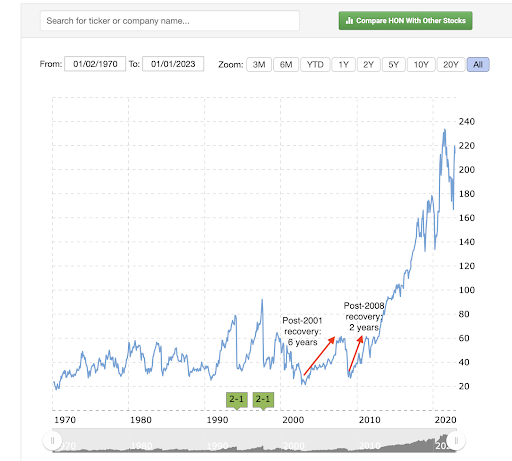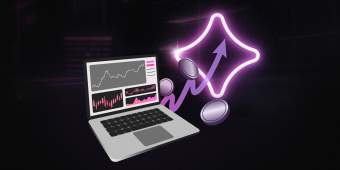For months now, analysts and forecasters have been weighing in on the likelihood of an economic downturn in the coming year. Nobody knows for sure what 2023 will hold, but we do know for certain that there are recessions in our future, just as there are recoveries and boom times and snow storms and heatwaves.
And whether it’s the recession of 2023 or 2008 or 2056, innovation during a recession is one of the surest ways to stay successful when times are tough and emerge in a strong position when the economy recovers.
That’s because, as research from Bain shows, an organization’s actions during recessionary periods have outsized impacts: mistakes tend to cost more and successes tend to lead to bigger upsides compared with times of economic growth.
But how can an organization achieve successful product innovation during a recession, when the focus shifts to core business operations? You’re about to find out.
During a recession, embrace innovation as optimization
Embracing innovation is hard in any economy. Most businesses are not set up to innovate; they’re set up to produce whatever they sell.
Because of that, many business leaders balk at the idea of innovating during a recession. When they hear “innovation,” it often sounds like “throwing money at some unknown (and unproven) thing.”
Or maybe they hear something like “launching a new product nobody can afford.”
But those aren’t the only ways innovation can manifest. One loose definition of innovation is creating something new that drives value and gains adoption. Working from that definition, optimization becomes a form of innovation.
And optimizing your business model is one of the most valuable things an organization can do during a recession. More efficient processes mean work gets done faster (often more accurately) and employees have more time and energy to dedicate to the ideation-type work that really moves the needle.
A more efficient business model also tends to benefit customers in noticeable ways.
For example, when the initial wave of COVID-19 triggered lockdowns around the world, restaurants were hit hard. But McDonald’s, thanks to investments in product development and improving existing products in the years leading up to 2020, was well-positioned to pivot. Among the pre-COVID innovations that set McDonald’s up for success:
Drive-thrus (including the drive-thrus themselves and digital order screens in drive-thrus)
A mobile app that let customers order and pay online, without any physical contact
Delivery
Digital touch screens in restaurants that let customers order without interacting with employees
When COVID closed down in-person dining, McDonald’s decided to differentiate itself by better meeting its existing customers’ needs. To that end, it pared down its menu to “core” items, made order screens in drive-thrus dynamic, and adjusted staffing to accommodate the new pandemic reality. The result: the organization cut 30 seconds from average drive-thru order time and saw Q4 2020 same-store sales hit 99 percent of Q4 2019’s.
Three things about this masterful innovation during recession are worth highlighting:
McDonald’s had a competitive advantage going into the COVID recession because it had laid the groundwork for innovation with ongoing improvements over the years. The mega-chain had a running start, if you will. It was used to trying new products and new features, evaluating their effectiveness, and adjusting as needed.
McDonald’s made investments across the organization: not only in technology but also in operations, personnel, and more. That’s essential for innovation to function: the entire business model needs to support innovative practices.
McDonald’s measured success in terms of impact on customer experience. It’s possible to invest in technology and operations in ways that don’t meet customer needs––and those are generally not good investments to prioritize.
How can you bring this innovation-as-optimization to your organization?
Conduct user research by talking to your employees. Ask what processes are most inefficient, what work they hate doing, which tasks are most mindless. Gather this insight from across the organization, review answers to identify the most inefficient processes, and then identify ways to improve. In many cases, you’ll be able to boost efficiency through automation. (By the way, this process is called user-centered design.)
When it comes time to prioritize which initiatives to tackle first, consider making a cost vs. business impact grid: changes in the lower right quadrant (low cost, high impact) are a great place to start (see Figure 1).







